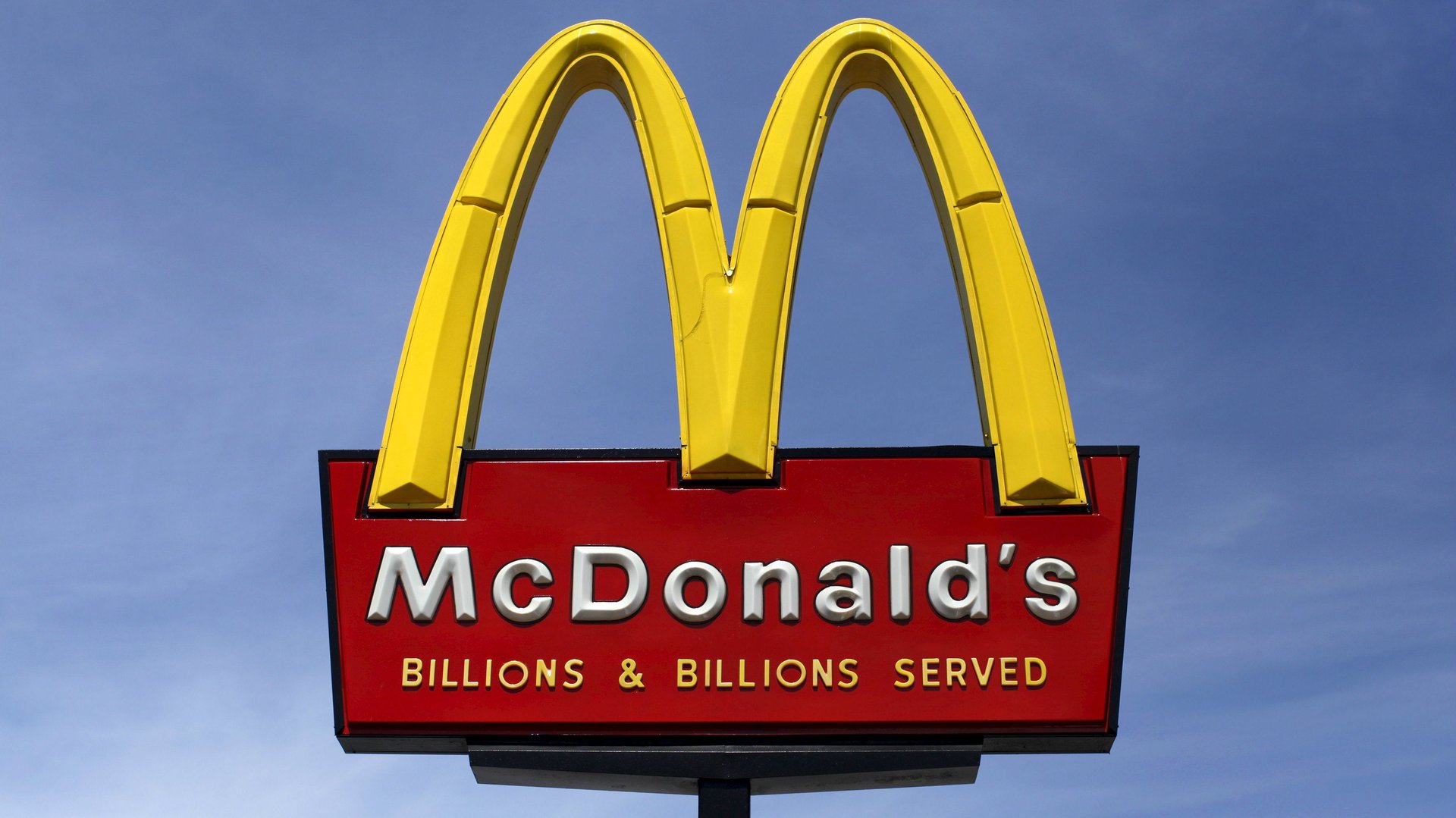McDonald’s reports progress on its health commitments—and also strong sales of chocolate milk
In September 2013, McDonald’s, joined by former US president Bill Clinton, announced a partnership with the Alliance for a Healthier Generation “to increase customers’ access to fruit and vegetables and help families and children to make informed choices in keeping with balanced lifestyles.” Thirty-eight million clementines, 161 million tubes of yogurt, and 21 additional million milk jugs and juice boxes later, the fast-food chain has met four of its five stated goals in the US.


In September 2013, McDonald’s, joined by former US president Bill Clinton, announced a partnership with the Alliance for a Healthier Generation “to increase customers’ access to fruit and vegetables and help families and children to make informed choices in keeping with balanced lifestyles.” Thirty-eight million clementines, 161 million tubes of yogurt, and 21 additional million milk jugs and juice boxes later, the fast-food chain has met four of its five stated goals in the US.
The one it’s still working on: offering healthier side substitutions for french fries in its value meals sold at US locations.
That’s the upshot of a progress report released today (June 25) on the commitments the company made nearly two years ago at the Clinton Global Initiative annual meeting. The pledges were meant to increase healthier food options—offering a choice of a side salad, fruit, or vegetable instead of fries, for example—and to emphasize these options better in advertising and marketing (i.e. promoting water, milk, and juice instead of soda for children’s Happy Meals) in 20 major markets around the world representing 85% of the company’s global sales.
McDonald’s hired Keybridge, a Washington-based based economic and public policy consulting firm, to verify and report the results of its efforts, specifically in the US and Italy.
McDonald’s had promised to meet its commitments by 2020. In 2014, only 2% of its US restaurants offered the side salad option for value meals. In early 2015, 83% were making the offer. “We’re very much ahead of schedule on this,” Becca Hary, a McDonald’s spokeswoman, tells Quartz. In Italy, Keybridge found that the company had made progress on, but not yet fulfilled, its goal of promoting only water, milk, and juice as the Happy Meal beverages on menu boards and advertisements directed at children. All other commitments in Italy had been met.
But the commitments themselves are not without their critics. The day after McDonald’s made its 2013 announcement, it was taken to task by the Center for Science in the Public Interest, which alleged that McDonald’s had “misled the media, CSPI, and families” by including fine print that allowed it to continue to list soda as a Happy Meal offering on menu boards, if not in its external advertising. A couple of weeks later, McDonald’s backtracked and said it would take soda off the Happy Meal section of the in-store menu boards as well.
Meanwhile, not all of the alternatives McDonald’s is offering would necessarily be characterized as healthy options. In addition to 1% Low Fat Milk Jugs, McDonald’s also promotes Fat Free Chocolate Milk Jugs with Happy Meals. The chocolate milk, which has 22 grams of sugar, is chosen three times more often than the white milk, Hary tells Quartz. (The low-fat strawberry Go-GURT yogurt tubes have significantly less sugar, with only 6 grams.)
With consumers looking for healthier, more transparently produced food, McDonald’s has been struggling to keep them in its stores. As the chain’s sales continue to decline, it is trying to reestablish itself as a “progressive burger company,” according to new CEO Steve Easterbrook, trying kale on its menu and bike-friendly packaging. So far its efforts have not shown clear results, and last week, the company confirmed it was closing more US stores than it was opening, making it the first time the chain has shrunk its presence in its home country, since at least 1970.